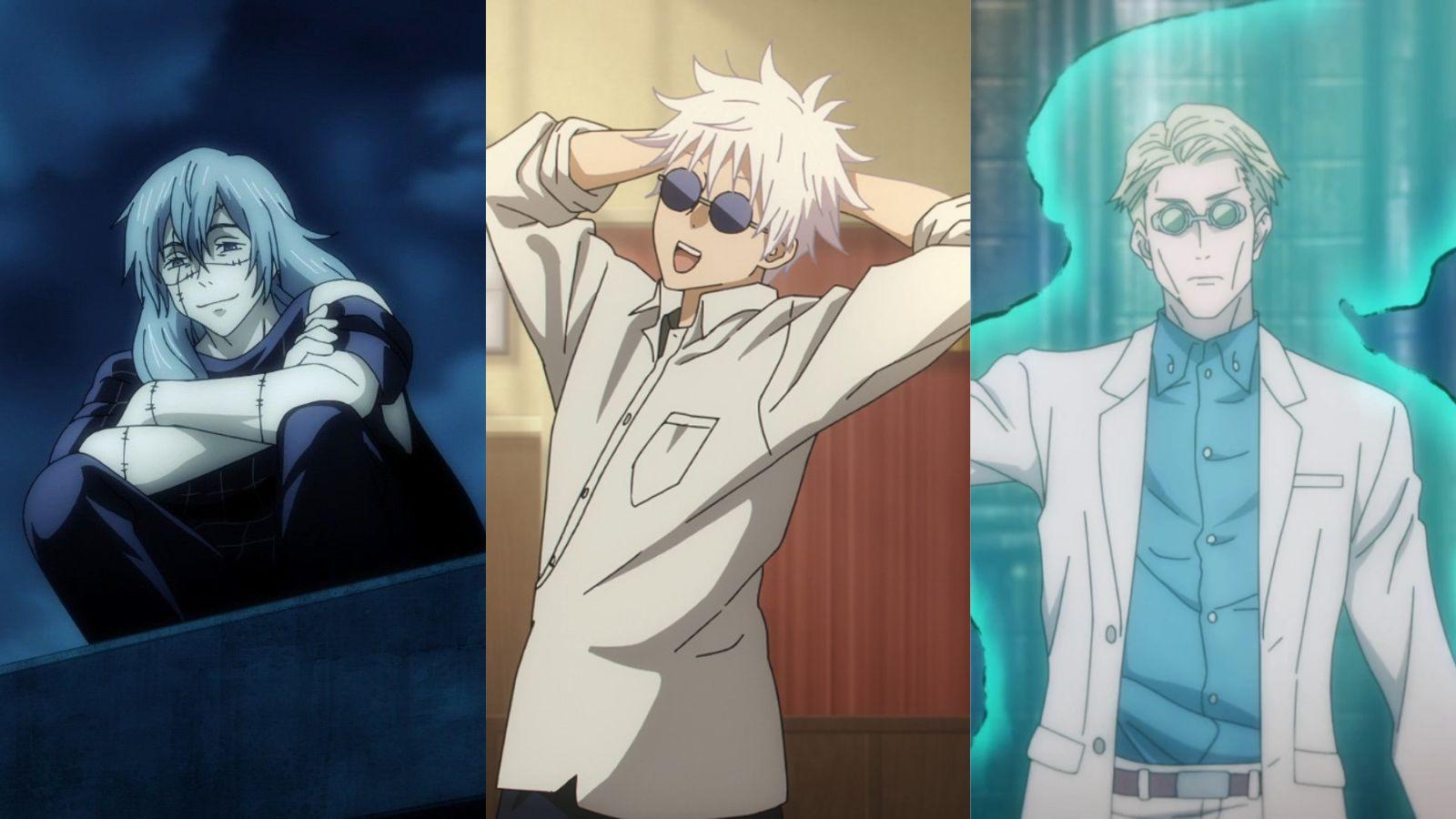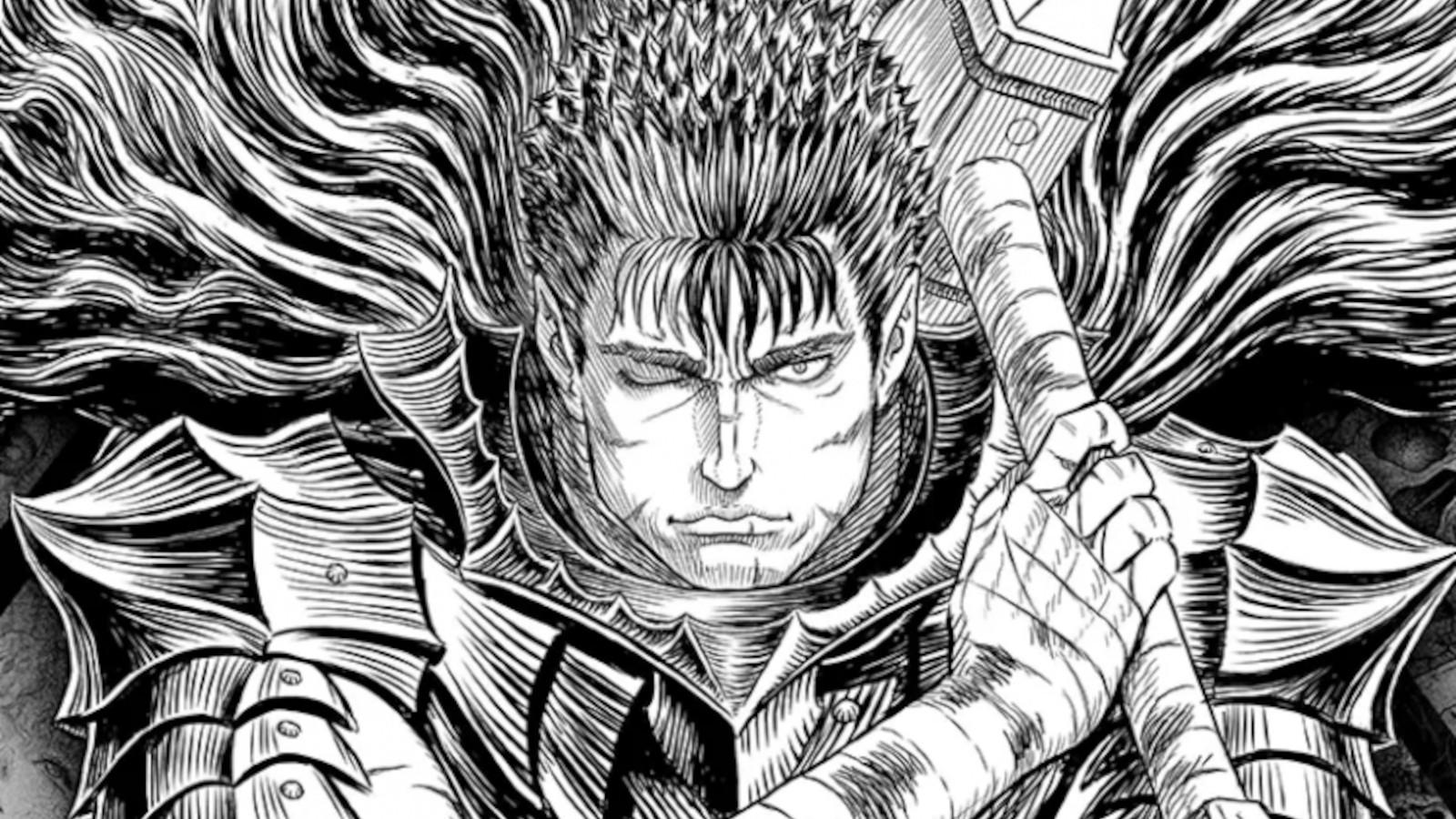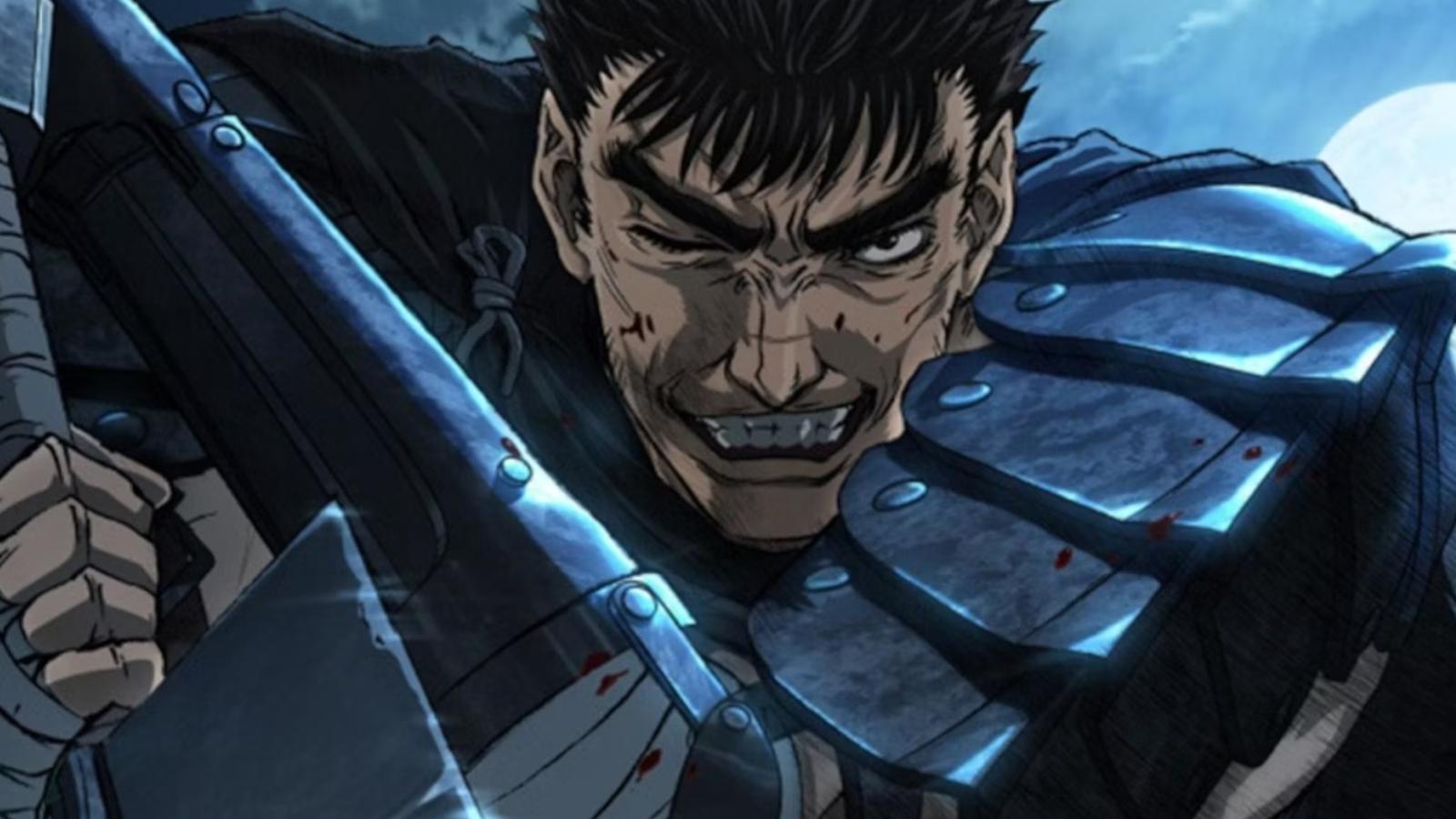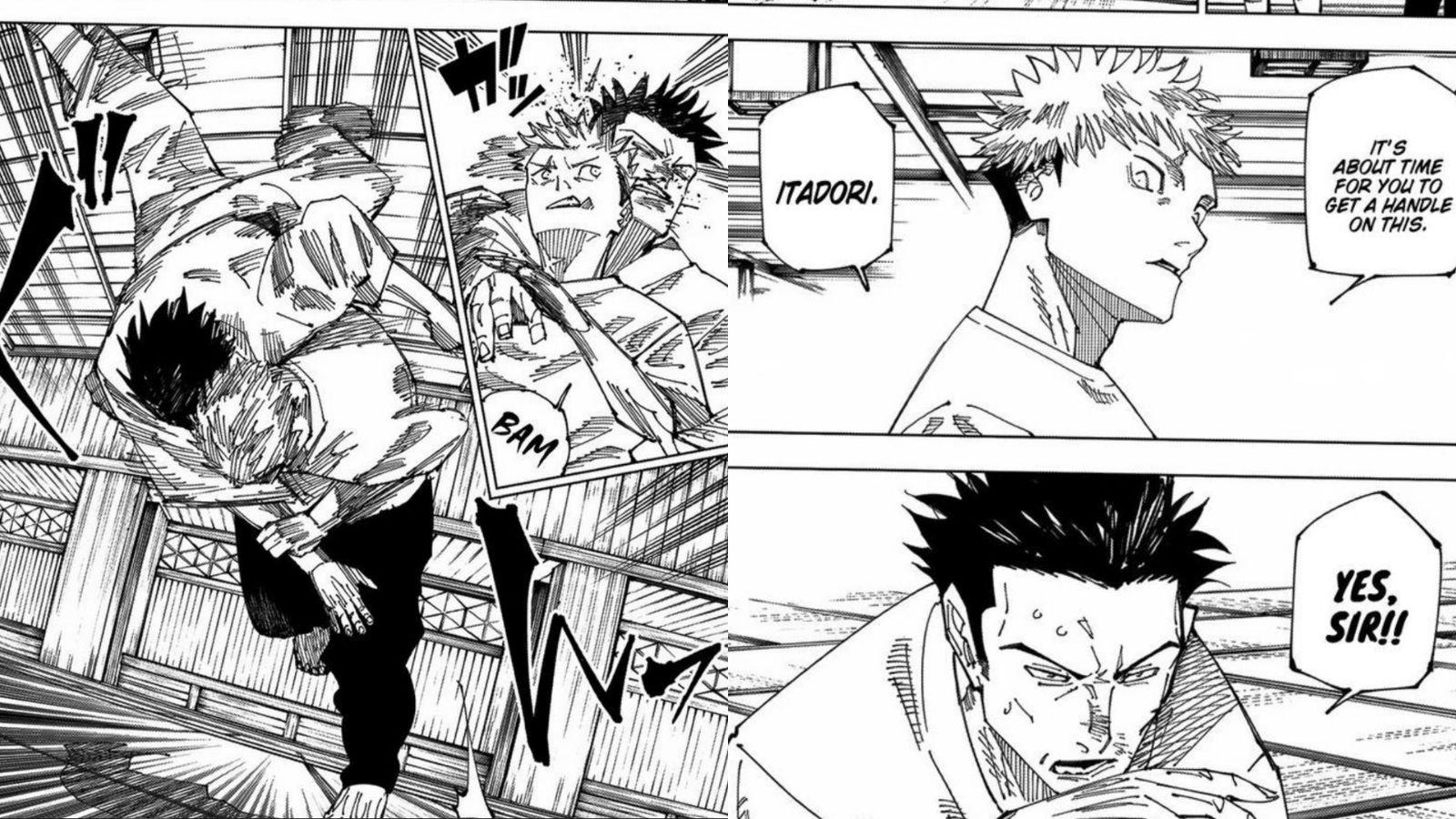Demon Slayer: All 7 forms of Upper Moon Four Hantengu explained
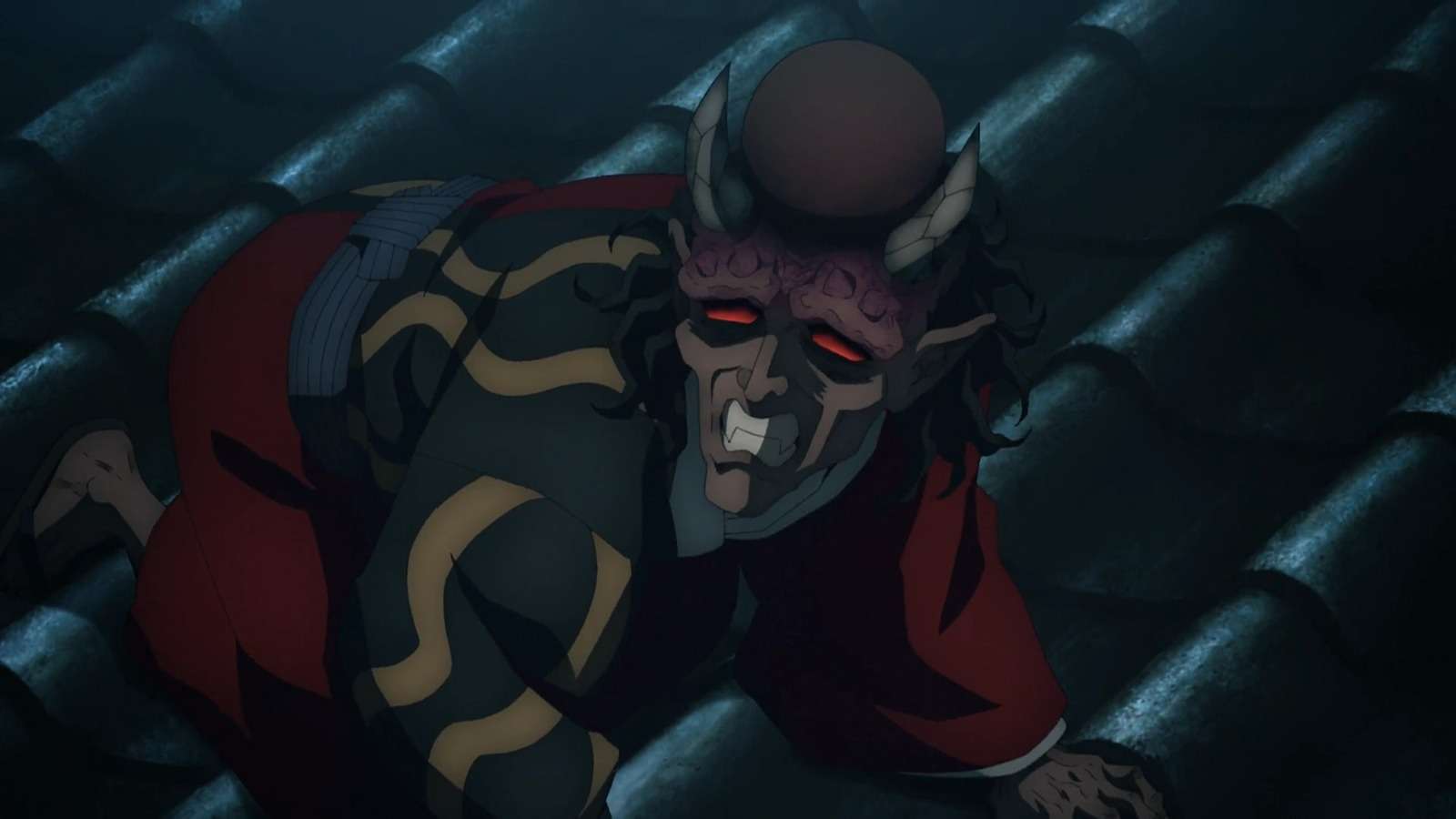 Crunchyroll
CrunchyrollDemon Slayer’s Swordsmith Village arc features the demon slayers going against two Upper Moons simultaneously. However, the Upper Moon Four Hantengu proves to be a real challenge when he makes powerful clones with varying abilities.
As the Demon Slayer Season 3 draws near its end, fans are almost familiar with the powers of Upper Moon Four Hantengu. Although Muichiro has defeated Gyokko, Hantengu is still giving demon slayers a difficult time.
He fights using the many clones he manifests from his emotions. He has seven personalities: Hantengu, Sekido, Karaku, Aizetsu, Urogi, Zohakuten, and Urami. All these personalities have different abilities, each extremely strong.
Because they originate from an Upper Moon Four, these clones cannot defeat easily. It takes the combined strength of Tanjiro, Genya, Mitsuri, and Nezuko to defeat this monster. Delve deeper to learn more about the different forms of Upper Moon Four Hantengu in Demon Slayer.
Hantengu: The manifestation of cowardice
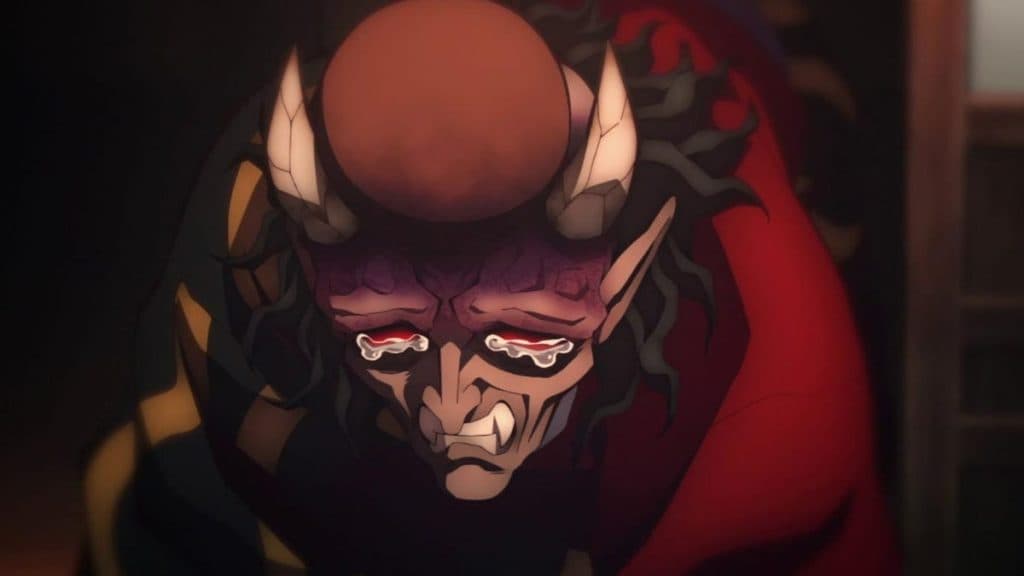 Crunchyroll
CrunchyrollThe persona of Upper Moon Hantengu’s primary form is one of intense cowardice and anxiety. He exhibits paranoid, terrified, and delusional characteristics and is easily alarmed by what happens around him. He consistently displays cries of fear in response to even the most insignificant events.
This form allows Hantengu to manifest his emotions and make them appear like the younger versions of himself due to his Blood Demon Art. A kanji on each clone’s tongue designates the main emotion that it personifies.
These clones, each of which has a unique appearance, set of skills, and arsenal, all have at least Upper-Rank caliber strength, and all seem to be younger versions of Hantengu. When Hantengu’s head is severed, his Blood Demon Art is triggered, and Hantengu’s body and head split into two identical clones: one that personifies rage and the other that personifies joy.
Sekido: The manifestation of anger
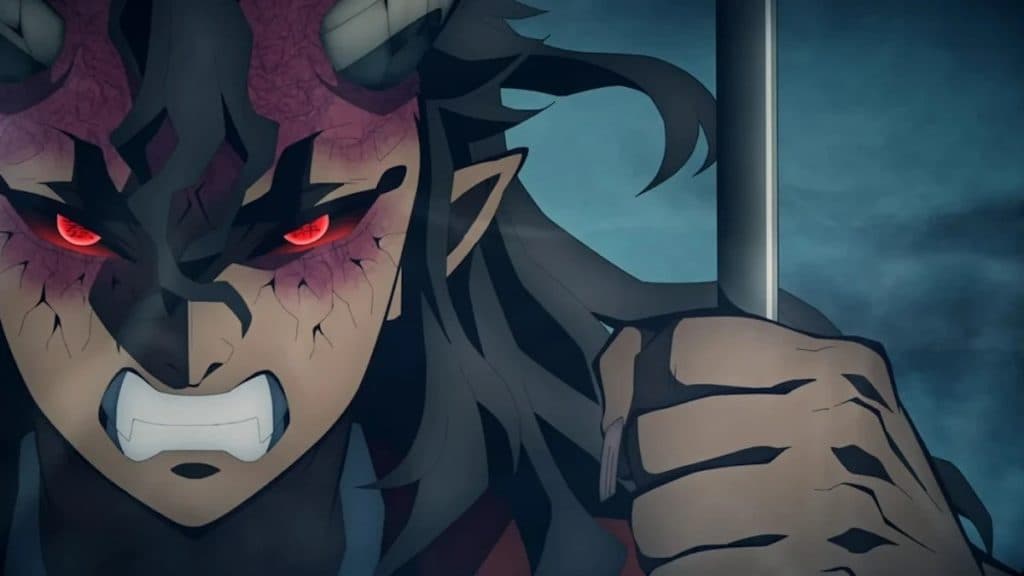 Crunchyroll
CrunchyrollSekido is the manifestation of Upper Moon Hantengu’s anger, and as such, he portrays emotions of constant vexation, irritation, and rage — even towards his fellow clones. He was easily enraged when the clones fell short of his expectations and were defeated by the Demon Slayers.
Sekido’s Blood Demon Art, “Electricity Generation”, allows him to generate electricity that flashes blue and red. He stabs his Khakkhara into the surface to activate this power, typically the ground. His electricity is so strong that it paralyses its targets in an instant, even if they are in midair, and renders them unconscious in a matter of seconds.
His Blood Demon Art has a broad area of effect, enabling him to take down several opponents simultaneously. Sekido also has the ability to draw in and absorb the bodies of Karaku, Urogi, and Aizetsu, fusing to become Zohakuten.
Karaku: The manifestation of pleasure
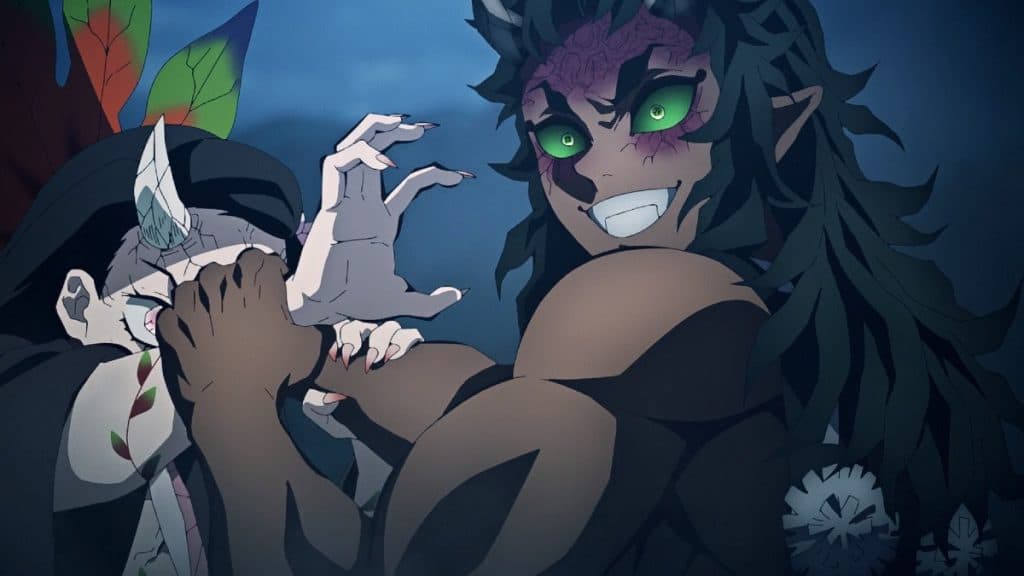 Crunchyroll
CrunchyrollAs the embodiment of Upper Moon Hantengu’s pleasure, Karaku demonstrates his carefree and easygoing nature. While battling them, he continuously complimented Genya, Tanjiro, and Nezuko, treating it more like a game than anything else.
Karaku’s Blood Demon Art, “Wind Blasts”, allows him to generate powerful gusts of wind using his maple leaf-shaped Uchiwa. Karaku can create a gale of wind powerful enough to instantly knock Muichiro unconscious, cause enormous craters, destroy an entire building, and crush Demon Slayers and demons alike under its tremendous pressure by merely swinging his Uchiwa down.
Using his Blood Demon Art strategically, he can hit the entire battlefield with powerful wind gusts, making it difficult for his opponents to move around, similar to being in a tornado. However, Nezuko proves that this ability can be used against him by anyone who has possession of his Uchiwa.
Aizetsu: The manifestation of sorrow
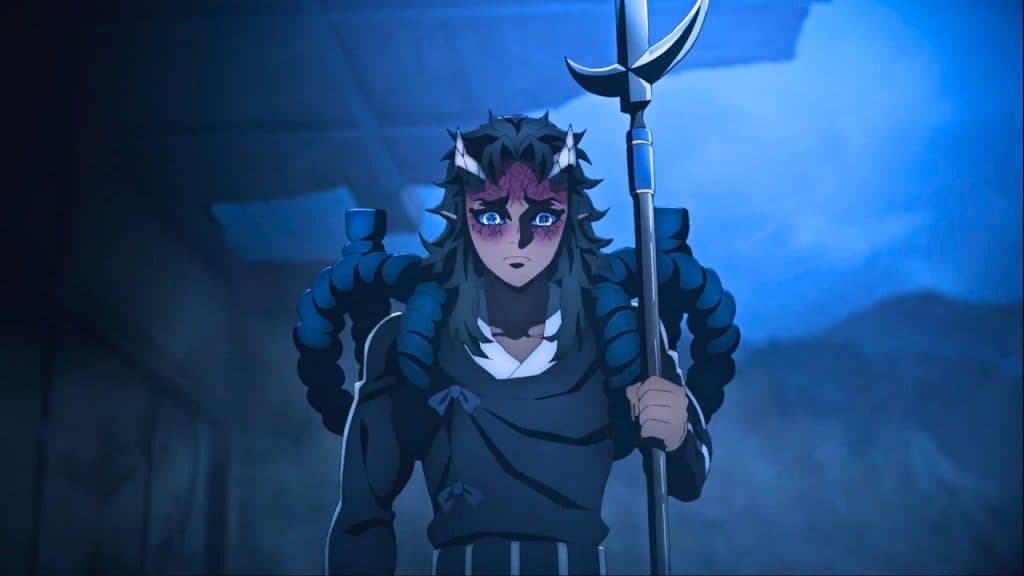 Crunchyroll
CrunchyrollAs the manifestation of Upper Moon Hantengu’s sorrow, Aizetsu portrays dejection and negative emotions, constantly describing everything as depressing. Out of all the manifestations, he is the calmest since he analyses his opponents and thinks out his strategy against his opponents instead of bickering with the other clones.
Aizetsu has some degree of control over the capacity to change his flesh, much like all demons. With the help of this ability, Aizetsu can transform his flesh into a Jumonji Yari – a spear in the shape of a cross.
His Blood Demon Art, “Spear Projection”, allows him to project the thrusting attack of his Yari over great distances, enabling him to attack his targets from a distance. Aizetsu was unfazed when Genya used a shotgun that fired Nichirin steel shot to break his neck. He even managed to attack while still keeping his head intact and mending his neck easily.
Urogi: The manifestation of joy
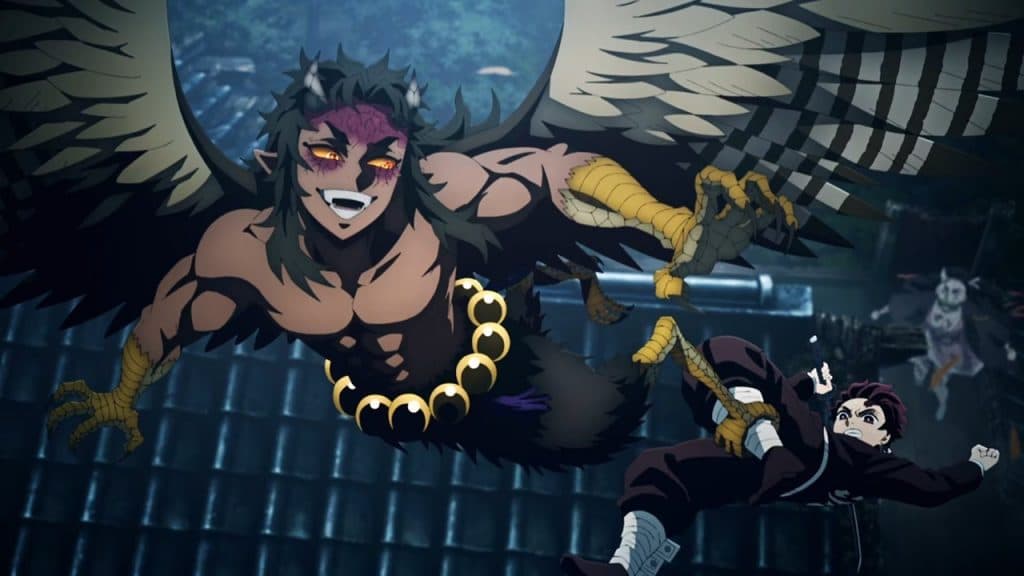 Crunchyroll
CrunchyrollUrogi is the most cheerful of Upper Moon Hantengu’s clones since he is the embodiment of Hantengu’s joy. Just like Karaku, Urogi seems to view the entire battle with the Demon Slayers as nothing more than a game or a form of amusement.
Urogi’s unique physiology enables him to acquire bird characteristics and skills, including huge feathered wings and extremely sharp claws. His enormous wings allow him to fly at incredible speeds, and his talons are strong enough to cut through diamonds.
Urogi’s Blood Demon Art, “Sonic Scream,” allows him to generate powerful sound waves from his mouth. Urogi’s scream has enough power to temporarily knock Tanjiro out of his senses, causing him to experience bleeding from his nose and ear.
Zohakuten: The manifestation of hatred
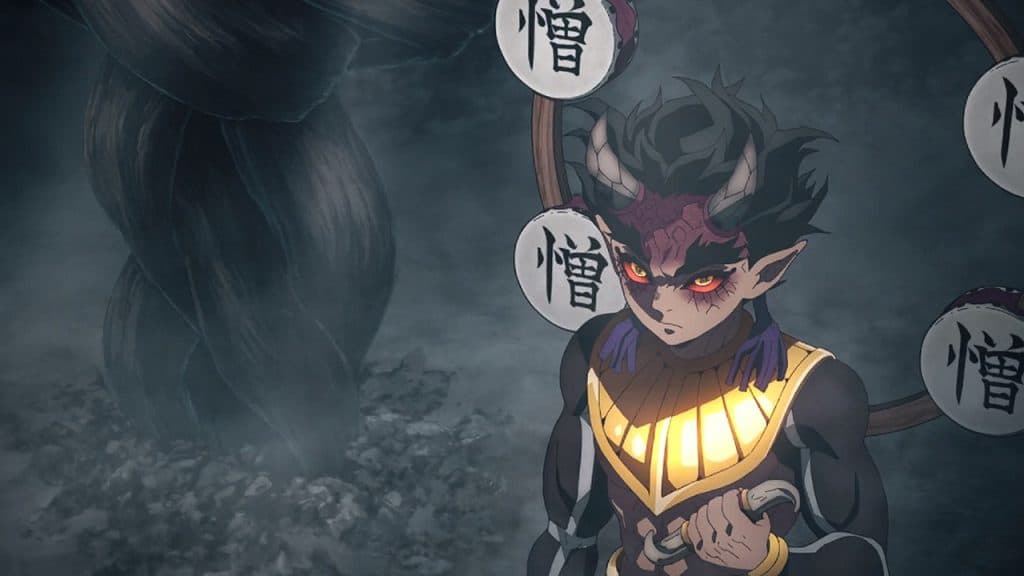 Crunchyroll
CrunchyrollSince Zohakuten is created by Sekido consuming the other clones, they both share similar personality traits. He is the most powerful out of all Upper Moon Hantengu’s clones. He was incredibly foul-mouthed, just like Sekido, as seen by the constant insults he directed at his opponents.
Out of all the clones, he is also the most intelligent and insightful, aside from Sekido. Zohakuten’s main Blood Demon Art, “Wood Manipulation”, allows him to manipulate and alter wood from the flora in his surroundings. This ability is triggered by tapping one of the many drums on his back.
Wood Manipulation is suited for both long-range and close-range combats. As a result of combining Sekido, Karaku, Aizetsu, and Urogi, Zohakuten is able to employ all four of their clones’ Blood Demon Arts to a significantly greater degree. Not only can he use those abilities, but he can also transfer them to the wood dragon he created.
Urami: The manifestation of resentment
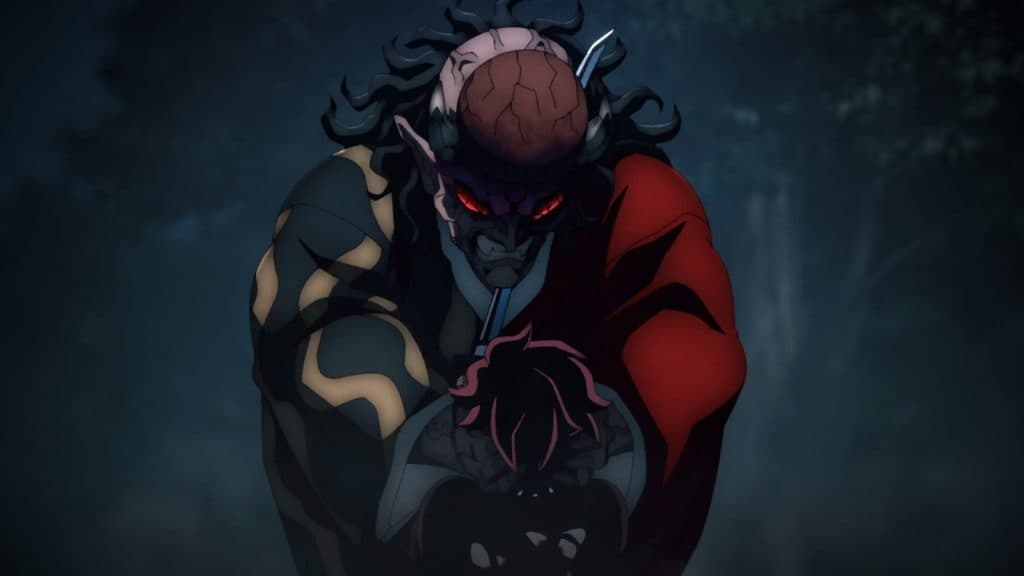 Crunchyroll
CrunchyrollAs the manifestation of Upper Moon Hantengu’s resentment, Urami is just as hypocritical and delusional as Zohakuten and Hantengu. He refers to himself as weak and innocent, all the while blaming Tanjiro for not seeing his innocence.
Urami resents the fact that he was punished and persecuted for crimes that he was “innocent” of. He has the power to drastically grow his size, allowing Hantengu to hide inside him in a last-ditch effort to escape the Demon Slayers.
Urami’s Blood Demon Art, “Ability Combination”, allows him to utilise the other clone’s Blood Demon Arts. Though it hasn’t been mentioned, Urami used Urogi’s sonic scream ability to stun Tanjiro, Nezuko, and Genya.
Demon Slayer can currently be streamed on Crunchyroll. In the meantime, check out our other anime coverage below:
One Piece Void Century | One Piece Thriller Bark shadows theory | One Piece’s chapter 1085 | Kagaya Ubuyashiki abilities in Demon Slayer | Demon Slayer Thunder Breathing 7th form | The real villain in Hell’s Paradise | Naruto’s Best Rinnegan User | Luffy’s Gear 5 techniques | Naruto’s Infinite Tsukuyomi | One Piece Red Hair Pirates | Demon Slayer Season 3 Finale | Bleach vs Naruto | Naruto’s God Tree
